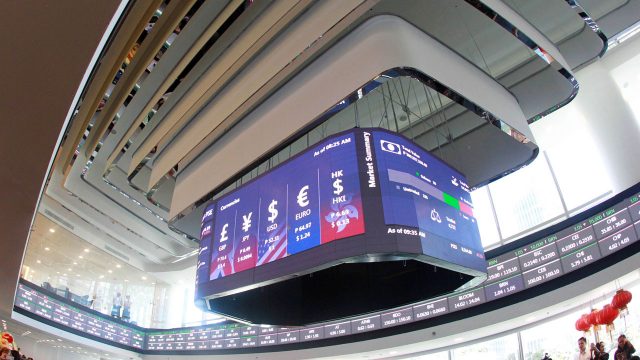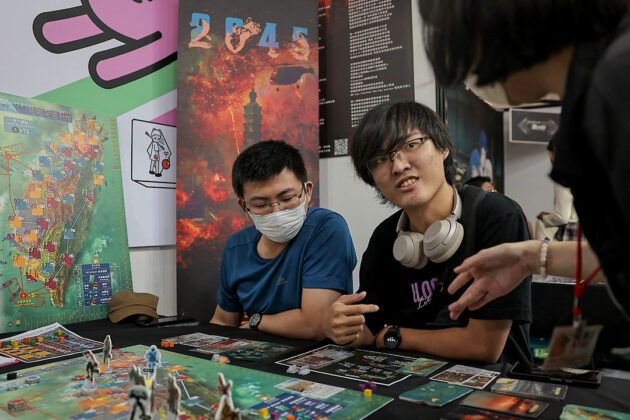“NEVER BEFORE has our nation enjoyed, at once, so much prosperity and social progress with so little internal crisis and so few external threats,” Bill Clinton exulted in his last State of the Union address, on Jan. 27, 2000. The Nasdaq had reached 4,000, a nearly sixfold increase in seven years. Unemployment had shrunk to 3%, the lowest in more than a generation. Having borne the burden of the Cold War, the American people were now reaping the peace dividend. The Republicans’ champion, George W. Bush, offered “compassionate conservatism” as an alternative to Democrats’ “compassionate liberalism.”
Abroad, the news was equally bright. The Europeans had introduced both a single market and a single currency and were well on their way to becoming a “United States of Europe.” The once mighty Communist international had dwindled to Cuba, North Korea, and a few university departments. World trade in manufactured goods had doubled in the 1990s and would double again in the 2000s. Global poverty was receding faster than ever before.
A quarter of a century later, the mood could not be more different. A sizeable majority of the global population — three in five people — believe that the world is getting worse. This is as true in traditionally optimistic America (which has just elected an irascible 78-year-old to succeed a faltering 82-year-old) as it is in stagnating Europe.
The world’s second-biggest economy, China, is run by a proud Marxist-Leninist, Xi Jinping, whose achievements include removing limits on his time in power. The world’s most populous country, India, is in the hands of an illiberal strongman, Narendra Modi. Hungary’s Viktor Orban, now 14 years into his second stint in power, has taken “illiberal democracy” within the borders of the European Union (EU). The number of countries that the American think tank Freedom House defines as “full democracies” has declined so much since 2007 that the great debate today is whether we are in a democratic recession or full-blown depression.
China and Russia have built an axis of authoritarian states that are determined to push back against Western liberalism. Vladimir Putin’s “war on the West” has involved not just the invasion of Crimea and Ukraine and the dispatching of private militia across Africa, but numerous sorties, by plane and submarine, into western territory. Xi has declared that any foreign power that tries to “bully, oppress, or enslave us” will “be battered and blooded from colliding with a great wall of steel forged by more than 1.4 billion Chinese people using flesh and blood.”
Optimists might point out that the first quarter of the 21st century has been better than the first quarter of the 20th, when the Great War took the lives of 15 million people and provided the materiel for both Communism and Fascism, not to mention the Second World War. But the contrast with the optimism of the 1990s is nevertheless astonishing. And worse is almost certain to come.
Some security officials believe that we are now engaged in an undeclared war with the “axis of autocracy.” Donald Trump, now elected with a clear majority, has hinted that, at the very least, he will pursue a policy of America First and may well destroy the institutions that undergirded postwar security. The EU is in a state of paralysis, with the leaders of the two most powerful countries, France’s Emmanuel Macron and Germany’s Olaf Scholz, discredited and their economies stagnant. And tens of millions of people are likely to flee Africa and Latin America in the coming years, driven by a combination of economic stagnation, political fragility, and climate change, empowering the far right and undermining the stability of the West. As for the miracle of technology, one survey of AI researchers discovered that 48% thought there was at least a 10% chance that its impact would be “extremely bad,” that is, lead to human extinction.
WHAT HAS GONE WRONG WITH THE 21ST CENTURY?
Let’s start off by acknowledging that there have been some successes. We have seen the creation of an entire virtual world. In 2000, only half of the US population had broadband access, and many parts of the developing world were broadband free. Today, more than 90% of Americans have broadband, more than half the world’s population has some sort of internet access, and there are about as many cell phones in the world as people — 8 billion plus. This has ushered in a world of information and entertainment that never existed before.
There are more than a billion fewer people living on less than $2.25 a day than there were in 2000, thanks to catchup growth in developing countries, particularly in Asia and especially in China. In 2012-2013, the global poverty headcount fell by 130 million people, marking it as one of the most remarkable years in history. In December 2020, China declared it had eliminated extreme poverty completely.
Yet even these positives contain negatives. The information revolution has undermined the business models of “old media” companies that put a premium on checking facts while, at the same time, empowering rumormongers who depend on polarization and misinformation. The spread of smart phones has coincided with the spread of psychological problems, particularly among the young. The Oxford University Dictionary’s word of the year for 2024 is “brain rot,” referring to “the supposed deterioration of a person’s mental or intellectual state” from the overconsumption of trivial material on the internet.
The war against poverty is going into reverse. In China, economic growth has slowed to a crawl. In Latin America and Africa, poverty rates are once again rising, thanks to economic stagnation, political instability, and rapid population growth. All in all, the number of people living in absolute poverty has barely declined since 2015.
The West has made a succession of policy errors that both weakened the West’s elites and emboldened its autocratic critics. George W. Bush invaded Iraq on the basis of false information and then bungled the occupation. Angela Merkel, Germany’s powerful chancellor from 2005 to 2021, failed to address her country’s two biggest weaknesses: its dependence on Russian energy supplies and its failure to invest in its own defenses. In the UK, David Cameron dealt with a feud within the Conservative Party by holding a popular referendum on Britain’s membership of the EU, plunging the country into chaos and reducing its economic growth rate.
The world has also lived through the worst financial crisis since the Great Depression, which deepened the growing sense of economic injustice and paved the way for the rise of populism.
The problem lies with more than just a handful of policy mistakes. It lies with the broader development of the global economy-cum-polity. Back in the 1990s, we looked forward to a world of entrepreneurial vigor, public sector discipline, and spreading peace. What we got, instead, was the very opposite: oligopoly, government splurge, and militarized blocs.
The consolidation of capitalism is most advanced in the US, the leading economic power, and in tech and finance, the cutting edge of the new economy, suggesting that oligopoly is the way of the future. Five tech companies are each worth more than $1 trillion, and one, Apple, Inc., is worth more than $3 trillion. Three big investment houses, BlackRock, Inc., the Vanguard Group, Inc., and State Street Corp., collectively manage around $22 trillion in assets. Over the past two decades, three out of four US industries have grown more concentrated.
This may be the result of excellence: Alphabet, Inc.’s Google and Apple are superbly run, and Microsoft Corp. is undergoing a renaissance after a period in the doldrums. But would anyone argue that America’s airline industry is a model of innovation and customer service? The success of the superstar companies slows the rate of innovation and thwarts competition; the success of second-rate companies contributes to a general sense of frustration. It’s notable that the world’s first great age of populism, before the First World War, coincided with the rise of giant companies, particularly in the US and Germany.
Meanwhile, Clinton’s pronouncement in another State of the Union Address, in 1996, that the era of big government was “over” has proved hollow. Americans tax themselves like a small-government country but behave like a big-government one. The US deficit is roughly 6% of GDP, twice the average of recent decades. The US Federal Register expanded to an average of 73,000 pages a year in the 2000s compared with 11,000 pages a year in the 1950s. The US government stepped in to save failing companies such as Citigroup, Inc. and General Motors Co. in 2008, as small-government bankers suddenly became fans of state intervention.
The situation is even worse in the EU, where government sprawl is not balanced by economic vigor. European countries spend beyond their means on welfare while the bureaucracy in Brussels prides itself on its role as “regulatory giant” rather than its ability to ignite growth. More than half of Europe’s SMEs flag regulatory and administrative burdens as their biggest challenge to growth.
Putin put paid to talk of the “peace dividend” with his invasion of Crimea in 2014 and Ukraine in 2022. But, in truth, the most serious threat to the global order comes from China, which has an economy 10 times the size of Russia and a much more disciplined leadership. From its admission into the World Trade Organization in 2000 onwards, but gathering pace with the rise of Xi to the top job in 2013, China poured a portion of the “globalization dividend” into building up its military might. China’s navy is now the biggest in the world, and its nuclear arsenal may reach 1,000 warheads by 2030, according to the US Department of Defense. It is also roaring ahead in tech. China has overtaken the West in hypersonic missiles — those capable of traveling at five times the speed of sound and evading air defenses — and is pioneering lasers, orbiting space robots, and high-altitude balloons.
WHAT ARE THE CHANCES THAT THE NEXT 25 YEARS WILL BE BETTER THAN THE LAST?
The 21st century has seen the two most compelling ideologies of the 1990s malfunction horrendously. These are neo-liberalism, the belief that, overall, markets are more efficient than governments in organizing economic life, and neo-conservatism, what started as a corrective to the left’s overconfidence in the power of the state to fix everything.
The great danger in the coming years is that we will see the further decline of a third ideology: liberalism. Across the west, liberal leaders are flailing. Kamala Harris decisively lost to a candidate who has broken one of the most important liberal rules: giving up power graciously when you lose an election. The two most flamboyant liberal politicians of the past decade — Macron in France and Justin Trudeau in Canada — are flailing. Keir Starmer won a landslide election victory in the UK on the promise of reviving the pragmatic center only to make a mess of governing.
Liberal elites have prepared the way for a populist backlash by a combination of commission and omission. They have fixated on cultural issues such as pronouns at a time when regular people are suffering from stagnant living standards. They have betrayed the principle of race-blind meritocracy by embracing race-conscious policies, a trend that is most pronounced in the US but has spread around the world. And they have paid too little attention to growing worries about immigration even as expanding populations put pressure on housing and public services. The result has been to cede ground to populists such as Trump in the US, Nigel Farage in Britain, and Marine Le Pen in France.
There are some reasons for optimism about the future. The AI revolution has the potential to cut administrative costs while giving everyone the equivalent of a smart assistant. The collapse of Bashar al-Assad’s regime in Syria is a serious setback for the “axis of autocracy,” reducing Russia’s influence in the Middle East and suggesting that even the most vicious dictators can be overthrown. The Republicans’ triumph in 2024 could prove self-correcting, creating opportunities for a new generation of middle-of-the-road Democrats.
Yet all this potential could go the other way. AI may destroy the jobs of millions of knowledge workers, creating a radicalized middle class, while handing more power to a few tech giants. A newly liberated Syria may break up into warring territories or fall into the hands of Islamic extremists. Trump and his allies may well destroy the rules-based international order that has largely kept the peace since 1945. An intriguing study of 120 years of populist governments suggests that the most common reaction to the failure of populism is for voters to demand yet more populism.
Which future we choose depends, above all, on whether liberals can once again revitalize their beliefs, or whether they will continue to drift and dither. Can they address the causes of populism or will they continue to repeat empty phrases? Can they think like regular people or will they continue to act like members of a global elite? Can they adapt classic liberal ideas about open competition and freedom of speech to radically new circumstances?
What happens this next quarter-century depends on how well we answer these questions.
BLOOMBERG OPINION















